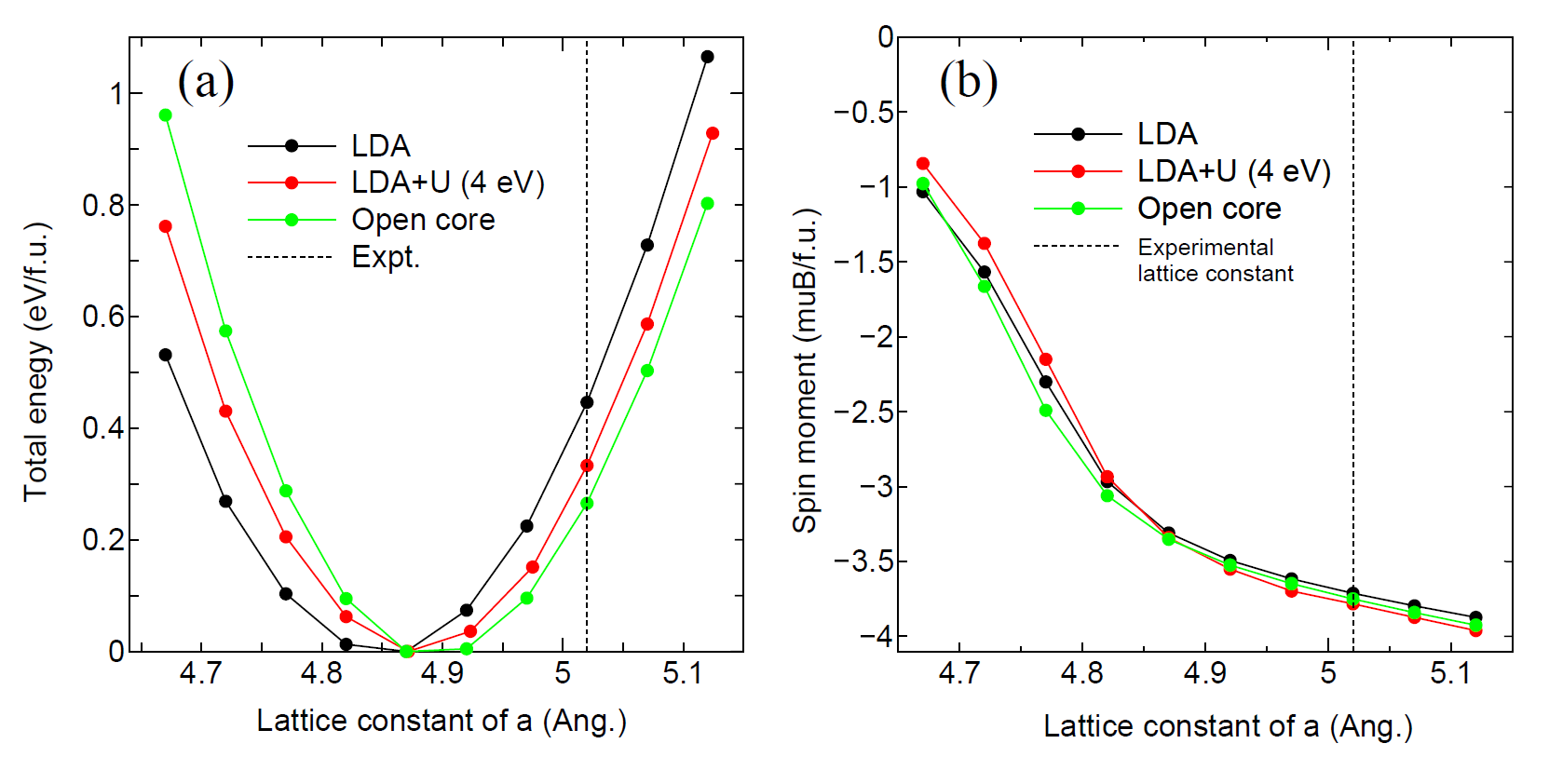Next: Cutoff energy: grid fineness Up: Pseudopotentials Previous: Conventional pseudopotentials Contents Index
The 4f-states in lanthanide elements are spin-polarized in many cases, and the majority states are located at below a few eV taken from the Fermi level. However, LDAs and GGAs cannot describe the feature of band structures for those materials. Although one way is to perform the plus U method by introducing on-site Coulomb repulsion for the 4f-states in such a case, OpenMX provides a simpler way that the spin-polarizaion of 4f-states is taken into account via a pseudopotential, so-called open core pseudopotential, while a few open core pseudopotentials are available in the database Ver. 2013. The open core pseudopotential of a lanthanide element is generated by assuming that the 4f-states are a part of core states, and the partial core correction charge is generated so that the radial shape resembles well the charge distribution of the 4f-states. Pseudopotentials: Nd_CA13_OC.vps and Nd_PBE13_OC.vps stored in the database Ver. 2013 were generated in this way.
 |
To illustrate how the open core pseudopotential can be used,
a series of calculations for NdCo![]() in the CaCu
in the CaCu![]() structure is shown in Fig. 4.
It is found that the calculation with the open core pseudopotential qualitatively reproduces the result by the LDA+U method.
When the open core pseudopotential is used by OpenMX, the partial core correction charge can be spin-polarized
by the following keyword:
structure is shown in Fig. 4.
It is found that the calculation with the open core pseudopotential qualitatively reproduces the result by the LDA+U method.
When the open core pseudopotential is used by OpenMX, the partial core correction charge can be spin-polarized
by the following keyword:
<scf.pcc.opencore
Nd 1
Co 0
scf.pcc.opencore>
The example is for the NdCo
2016-04-03